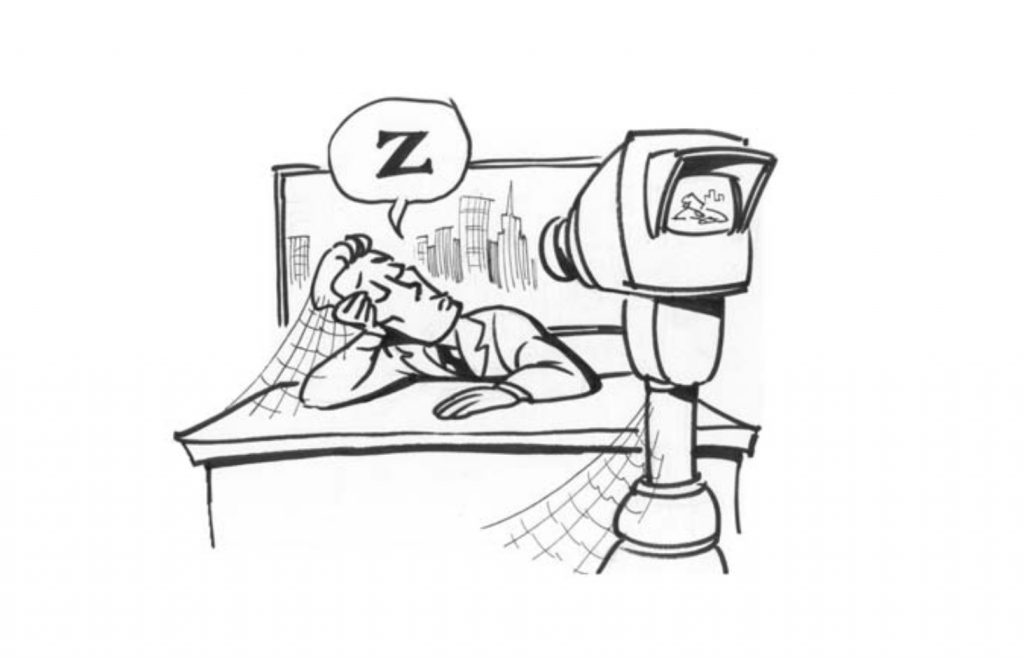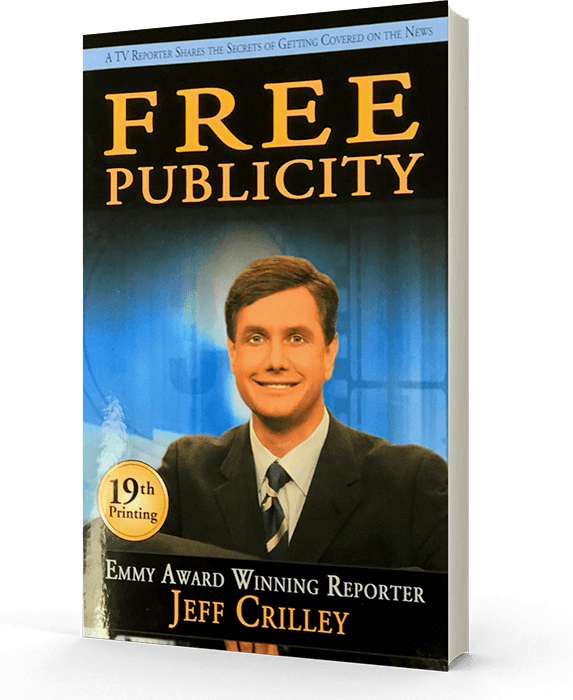“What are you doing here?” some people will say to a reporter. “This isn’t news. It must be a slow news day.”
But if you want news coverage, you should be praying for days like that—in fact, the slower the better. Slow news days are when stories that might not otherwise make the cut can actually find a spot on the six o’clock news.
In this chapter, you’ll learn which days are the best for coverage, which days are the worst, and what time you should hold your event to guarantee the most coverage.
THE SLOWEST OF THE SLOW
Here’s a simple rule of thumb: anytime government offices are closed, it’s a slow news day. Roughly half the stories that are in the news are government related. Don’t believe me? Just check out today’s paper and count the number of stories involving courts, lawmakers, schools, and public administrators at the state, local, and national levels.
It’s amazing journalists are able to put on a newscast or fill a paper without them. But you know what? We do. We must fill time regardless of whether anything newsworthy happened or not.
So you, being the smart media master that you are, should time your story for those days when we are desperate for news. When are those days exactly? Just get out your calendar and start circling holidays and weekends. In fact, go ahead and circle the day before and the day after big holidays, because those are usually slow as well. Government officials don’t tend to make news when they are winding down for a holiday or just getting back from one.
When you are finished marking up your calendar you’ll have dozens of days in which reporters are scrambling to find news.
Most journalists will agree the slowest week of the year is the one between Christmas and New Year. Just take a look at your local paper. It gets pretty thin. And the evening news that week tends to be filled with fluff. Schedule something for that week, and it stands a much better chance of getting covered than during any other week of the year.
A CHRISTMAS BONUS
PR expert Kirk Huggins knew the news would be desperate for a feel-good story when she scheduled an event for Christmas Day. While most people were home with friends and family, Huggins was hard at work helping a client play Santa.
She says a telecommunications company wanted some free publicity for its prepaid long distance cards. So Kirk suggested they pass out free phone cards to needy people at the Salvation Army on Christmas Day.
The event was a huge hit with the local media and was even one of the top stories that night because there was nothing else going on that day.
Kirk’s client couldn’t have been happier. That evening the news presented the company as being filled with the spirit of giving, allowing poor people to call friends and relatives for free on Christmas Day. You couldn’t have bought a better commercial.
PRIME TIMES
When is the best time of the day to hold your event? It depends on your goal. What kind of coverage do you want? Which newscasts are you trying to get on—morning, noon, or night? Or is it the newspaper or radio you’re aiming for? All of them involve different deadlines.
Generally speaking, if you want to get the most exposure, hold your event in the morning. The prime time would be anywhere between 9:30 A.M. and 11:30 A.M. I’ve yet to work in a newsroom where photographers and reporters show up much before 9 A.M. So by timing your event for no earlier than 9:30 A.M. you improve your chance of getting coverage. Of course, staff can always be called in early, but it usually involves paying overtime.
You don’t want to force the media to make a financial decision about whether your event is newsworthy.
Holding it in the morning also gives the radio reporters plenty of time to get it ready for the coveted afternoon drive-time shows.
And these days most newspapers are morning papers. A morning event gives the print folks a whole day to write and edit before the paper goes to bed.
Of course, there are the afternoon and evening newscasts to consider. Generally speaking, reporters require about three hours to cover and prepare a story to have it ready for their next newscast. So if you’re trying to get on the five o’clock news, holding it any later than 2 P.M. is asking for trouble. You do the math. Want to be on the nine, ten or eleven o’clock news? Your event should be held around 6, 7, or 8 P.M., respectively.
Now, you can understand why I say a midmorning event is prime time. If it’s a strong enough story, you may get coverage on all the newscasts throughout the day and evening.
The same holds true for print and radio. The more time you give journalists to do their jobs, the better the coverage.
The only exception I would make to this rule is if you think your event is newsworthy enough to be carried live during a newscast. This is a somewhat risky plan because you can’t always predict what TV will cover live. However, if you’re fairly certain the media loves your story, there is no bigger payoff than having all the media carry your event live without any chance to edit your words.
PUBLICITY ON ICE
When the Dallas Stars went to the Stanley Cup for the first time, the eye of the media storm on game day was right out in front of Reunion Arena. There were dozens of reporters and photographers looking for subjects to feature live on their five and six o’clock newscasts.
A small Dallas ice company decided to create a giant Stanley Cup in ice and get some free publicity. When the brothers who owned the company showed up just before the five o’clock newscast with their six-foot tall ice sculpture, the reporters were literally fighting over who would interview them first.
I remember having a heated battle with a reporter from another station because we were both live at the top of the newscasts and both of us knew the ice sculpture would be great TV. The brothers just stood back and smiled. They were featured on every newscast that evening and in the paper the next morning.
Anyone who came up with a creative idea and showed up in front of the arena would have been guaranteed coverage, but no one else did. The brothers carved out some free publicity for their ice business and took advantage of a concept we’ll discuss in the next chapter: the feeding frenzy.
IT’S A BIRD, IT’S A PLANE, IT’S DENNIS RODMAN?
Another example of perfectly timing an event to take advantage of live TV comes from DJ Jason Addams. He tells the story of how his Indianapolis radio station cashed in on the hype surrounding a playoff battle between the Indiana Pacers and the Chicago Bulls.
“At the time, Dennis Rodman was playing for the Bulls and everyone in Indiana hated him,” recalled Addams. “So, we got a pair of playoff tickets to a sold-out game, and tied them to a helium-filled inflatable man wearing a Dennis Rodman mask.
“We told our listeners that the person who recovered the floating Rodman when he finally came back to earth could keep the tickets. We knew a TV station or two would cover it,” Addams gushed, “but we had no idea just how big a hit this stunt would be. We had every TV traffic helicopter in town following it live throughout their morning newscasts. Heck, they followed it from the moment we launched Dennis off the roof of our radio station until he finally floated out of town and the morning shows were over.”
DON’T FIGHT THE FRENZY
Have you ever seen them feed the piranhas at the zoo? That’s what we journalists look like when we go after a big story. We are so hungry we will devour anything that has to do with it. So, don’t ever schedule an event that competes with a big news story. You’ll lose every time.
But read on, you’ll find out how to take advantage of a feeding frenzy and hook yourself some free publicity.
NEWS YOU CAN USE
- Appreciate slow news days and take advantage of them.
- The slowest times are around holidays and wee ends, so get out your calendar and start circling dates.
- Prime time is between 9:30 A.M. and 11:30 A.M. You want to make sure reporters have enough time to meet their deadlines.
- Allow reporters a minimum of three hours to cover and edit a story.
- Holding an event to be covered live is risky, but for big stories the payoff can be huge.
- Don’t try to fight a feeding frenzy. The piranhas are too busy feasting on another story to cover yours.
- If you can’t beat ’em, join ’em. Come up with an angle that ties in to the big story.

